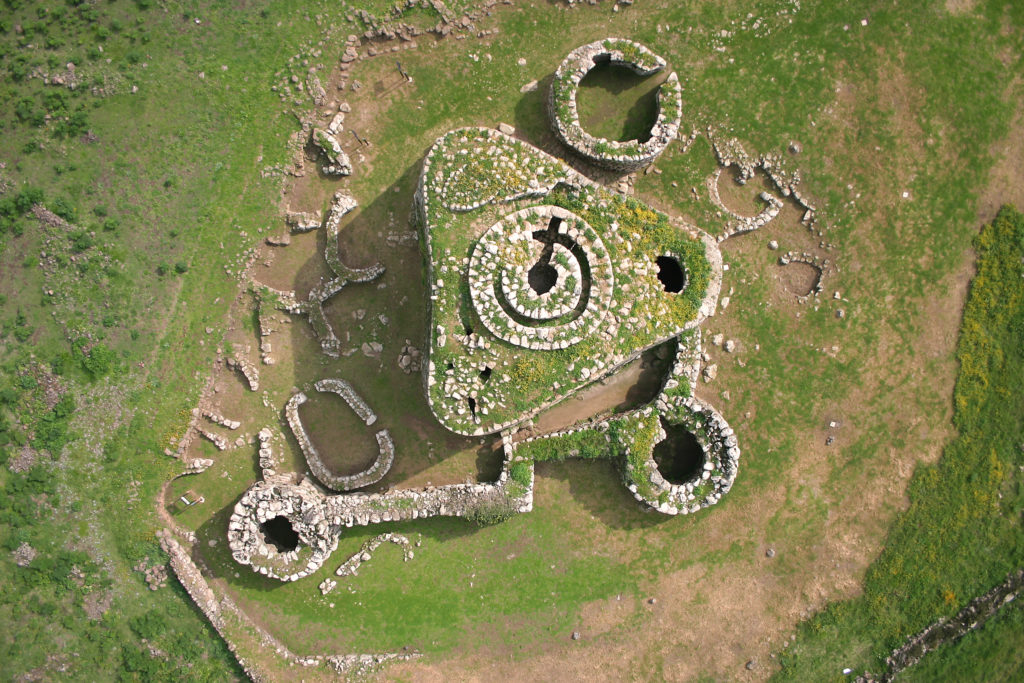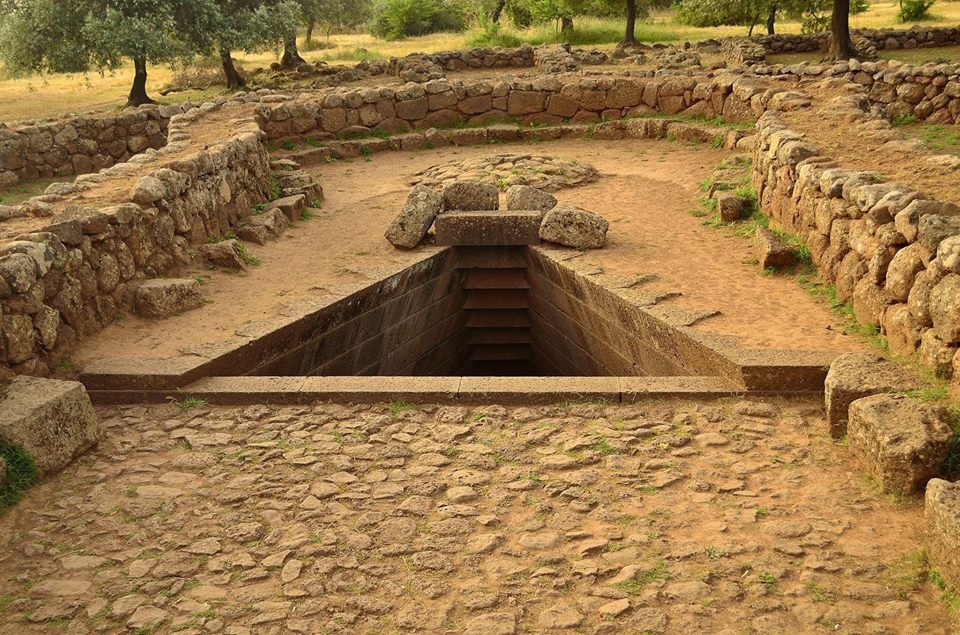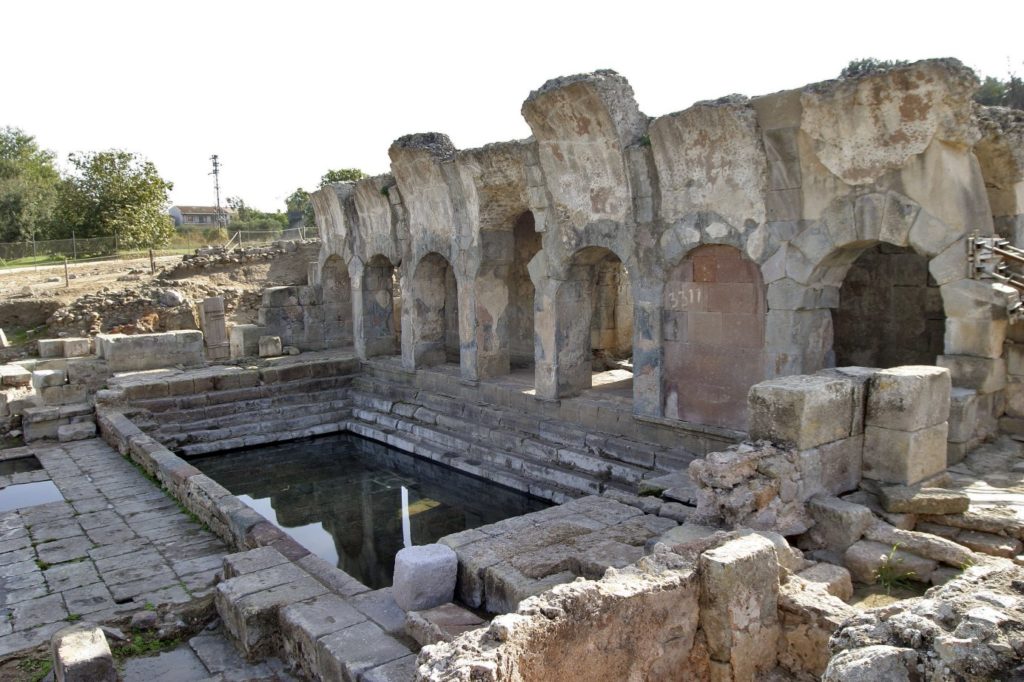Surroundings of Ghilarza
In the surroundings of Ghilarza the territory is rich of interesting sites, such as: Nuraghe Losa, Santa Cristina and the Thermal Baths of Fordongianus.

Nuraghe Losa is situated in the countryside of Abbasanta, close to Ghilarza. It is easy to reach from the State Road 131, between the kilometres 123 and 124. You will find it on the right arriving from Sassari and on the left arriving from Cagliari.
Walking through a path, you will get one of the best preserved and important monuments of the nuragic architecture thanks to its organic design, compact size and refined building techniques.
Nuraghe Losa dates back to the middle of the Bronze Era (XV-XIV century b.C.) and it was built in basalt stones, typical of the area. It is composed by a central fortified tower and three additional towers protected by two stone surrounding walls.
Inside the surrounding walls there are the ruins of a big nuragic village with circular huts that were built after the nuraghe from the Latest Bronze Era (XIII century b.C.) and it was inhabited until the Late Iron Era (VII century b.C.).
The village was abandoned for many centuries, then it was occupied again in the Punic Era (IV century b.C.) and also inhabited during the Roman Era until the VII century a.D. It is proved by basalt urns of Imperial period located near the entrance of the archaeological area.
The site was excavated starting the end of the Nineteenth century until the end of the Twentieth Century.

Santa Cristina is a nuragic sanctuary located in the territory of Paulilatino. It is distant almost ten kilometres from Ghilarza and it is reached from the State Road 131, which connects Sassari and Cagliari, at the crossroad on the kilometre 114,300 and it is signaled by road signs.
The site is known especially for the nuragic well temple with staircase and tholos vault, built in smooth basalt stones and positioned with mathematical precision. It is considered the most representative well temple in Sardinia for its refined building techniques.
It dates back XI-IX centuries b.C. and it is surrounded by a wall that marked the elliptical sacred enclosure. A long descending staircase reaches inside the well, where the water is still present.
The archaeological area is divided into two nucleuses. In the first there is the well temple, the so-called meeting hut, well-preserved with circular seats and enclosure and some smaller huts. The other consists of a single-towered nuraghe and housing unit of various eras.
The complex includes also a modern sacred area, composed of a small rural church, consecrated to Santa Cristina and built by Camaldolesi around the XIII century, and about thirty little houses, called muristenes, used to accommodate the pilgrims during the nine days of religious and civil celebrations for the saint, commemorated on the second Sunday of May.
In the centre of Paulilatino, in the archaeological section of the Archeological- Ethnographic Museum “Palazzo Atzori”, housed in a eighteenth-nineteenth century manor house, it is possible to visit evidences from the excavates in the nuragic complex of Santa Cristina. The museum includes also various objects of ethnographic interest that prove the rural life of the territory. Very interesting is the “room of the bread”.

The Thermal Baths Forum Traiani are located in Fordongianus, situated on the left bank of the Tirso Valley, easy to reach from Oristano travelling the Provincial Road 55 direction Silì and continuing through the State Road 388 direction Simaxis and Ollastra. From the centre of the village take the Route of the Thermal Baths until you reach the archaeological area.
The thermal complex is one of the most important in Sardinia, located around the urban site of Forum Traiani (from which comes the name Fordongianus), and built during the middle-imperial era by the imperator Traiano as a trading centre between the villages of the hinterland and the Romanized peoples living in the area of the Gulf of Oristano. At the beginning of the IV century a.D. it became probably municipium.
The complex of the thermal baths (the ancient Aquae Ypsitanae) exploited the waters which still today spring from the ground at a temperature of 54 C°. It consists of two structures dated back different periods. The most ancient, dated back to I century a.D. but used also then, is characterized by natatio, the big swimming pool used for therapeutic baths.
The thermal structure of III century a.D., located behind the most ancient and whit whom it is connected through a small staircase, is a classical type and it was compounded by frigidarium, tepidarium e calidarium, difference spaces in which people could do cold, tepid or hot baths.
Recently for the use of the thermal baths, it has been built a specific establishment and a hotel.